These thermal tops and bottoms are the best long underwear that will keep both men and women cozy even on really cold winter days.
They are not just warm and soft. You can use them just like a thermostat: you can turn the heat up or down by wearing the right thermal top and bottom.
You can be warm, warmer and the warmest.
Another reason why they are the best long underwear is that they are so light weight that you will not even notice them on you. This also means that they do not restrict motion.
Table of Contents
Men’s Thermal Tops and Bottoms
Warm for everyday cold:


X-Warm for very cold days:
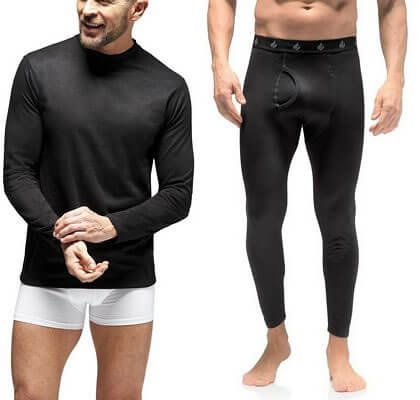
XX-Warm for extreme cold:


Click the button below to order men’s long underwear:
Women’s Thermal Tops and Bottoms
Women’s models are also divided into three groups.
Warm:


X-Warm:
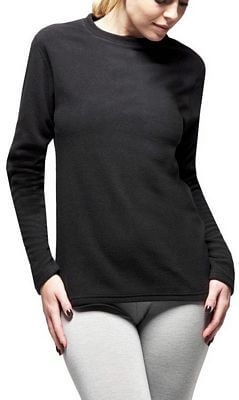
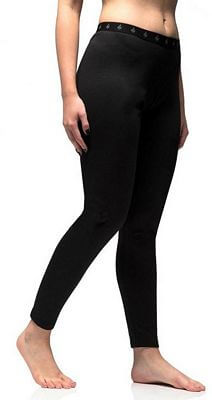
XX-Warm
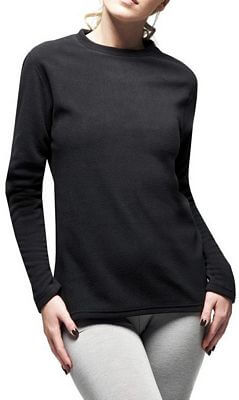

Women can also get:
Thermal Tights:

Thermal Leggings:

Click the button below to order women’s long underwear:
See also: Custom Made Corsets For Women
Details About Long Underwear
They are soft because a light weight yarn is thoroughly brushed both inside and out.
A multi-directional stretch is created by an innovative knitting technology. As a result, they provide ultimate freedom of movement and fit.
Flat seams reduce bulk and create a comfortable non chafe fit.
You stay drier and fresher because the underwear incorporates moisture and odor management technology.
They are made mostly of polyester and some elastane and are machine washable.
When it comes to thermal tights and leggings for women, they are made from an advanced insulating yarn. They have a soft-brushed inner pile that increases the amount of warm air held close to the skin.
They are also made of polyester and elastane and are machine washable.
Whatever model of this long underwear you choose, rest assured that they sit well under your clothing without creating bulk and disrupting your style. They also allow full mobility.
Tips For Buying Thermal Underwear
Now I’m gonna give you some tips on how to buy the right thermal underwear for you.
But before I get into this, let me ask you a question. How in the world do animals survive in sub-zero temperatures?
The answer is they do a great job of insulating themselves. They make sure that the heat within their bodies is not transferred out to the natural environment.
That happens because they use air, which is an amazing insulator. If you understand that and you can do that with your clothing, you are going to be able to go out there and dress warm pretty much in any situation.
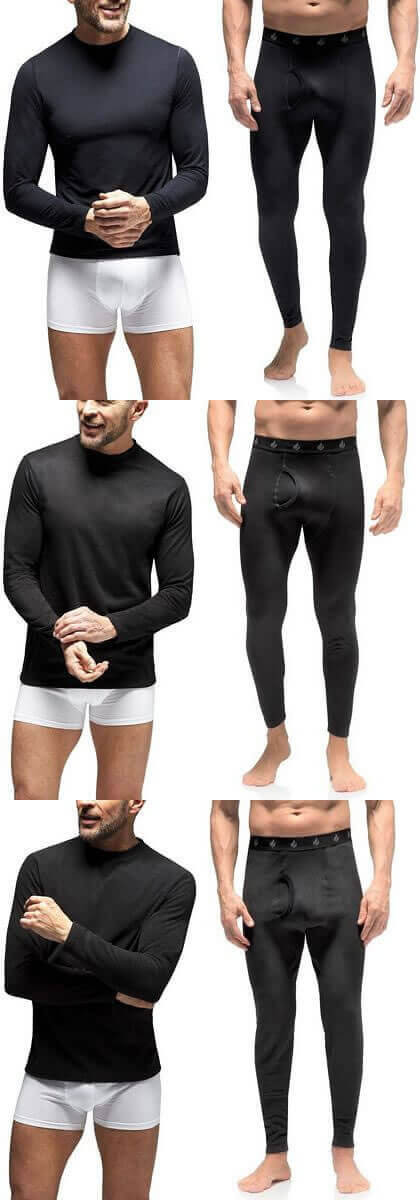 The first thing you want to do is make sure that whatever you wear, fits you properly. The issue with a lot of thermals is that they are made to fit as many men and women as possible.
The first thing you want to do is make sure that whatever you wear, fits you properly. The issue with a lot of thermals is that they are made to fit as many men and women as possible.
If it is too loose on you, guess what’s going to happen. There’s air next to your body, warm air, and then all of a sudden, when you move, it’s going to get pushed out. And what’s going to come back? Cooler air.
So you are going to actually lose heat when you’re wearing something that’s too loose. You want something that fits close but never too tight. You can usually tell it’s too tight because it’s just not going to feel good, it’s going to be restrictive.
Next let’s get into the actual fabric. Two things I’m going to talk about here. The actual weight of the material and the material that’s actually used.
First off, let’s talk about weight. There’s ultralight weight, light weight, mid weight and there’s heavier weight.
You may be thinking that heavier weight is going to be warmer. That’s not always the case. It does depend on what material is being used, in addition to the weave.
Yoo can see some very heavyweight fleeces out there, which are going to allow the air to transfer pretty easily. You can also see some micro-weave thermals. They are specifically woven to maintain heat. They do a good job of retaining heat despite the lighter weight.
The big thing you’re going to see here is it’s easier for a heavyweight to be an insulator, therefore they’re oftentimes also going to be lower cost.
The issue with a heavy weight is if it doesn’t fit you properly, it can basically impede your freedom of movement. If you are working in your clothing, you want to find something that not only fits you properly but is going to be a little bit lighter weight so you have full freedom of movement.
Next let’s get into the actual material being used. I will not talk about silk because it’s really impractical, especially when it comes to care.
So let’s talk about cotton, which is the most common, but you need to be very careful of cotton, especially if you exercise or you work in it all day. Because if you start to sweat, it’s not going to do a good job of wicking most of the time.
However, if you are on a really tight budget, then cotton is going to be the most common one out there. If you aren’t really working up a sweat, you just need something going to and from work, you’re going to be outside for maybe 30 minutes, then cotton may work for you.
If you’re going to buy cotton though, you want to find something with a gauze weave. It has a bit of a three dimension to it and this is nice because it does retain a bit of air, although you need to make sure you get the fit properly.
Next let’s talk about wool and let’s talk about synthetics.
Wool is going to be good if you can find it at a decent price. It’s a luxury fabric and because it’s close to the body, they have to make sure it’s a high quality wool, otherwise it’s going to be itchy.
Most of that is going to be used in suiting materials, so if it is used in a thermal underwear, all of a sudden the price is going to go super high.
Synthetics have come a long way in the last 20 to 30 years. There are amazing fabric. Most are really lightweight and are designed to replicate a very fine wool. They do a great job of retaining heat, of insulating, and that is probably the biggest advantage.
Now let’s talk about function. I’m going to talk about insulation, stretch, loft, bacterial resistance and moisture wicking.
Insulation has a lot to do with the fabric, not only the weight but also the material being used. In my opinion, from what I’ve seen and used, the best ones that I have found are going to be using a synthetic material that is specifically designed to insulate and maintain heat.
You want to be careful of cotton insulating properties. In my opinion, they are some of the lowest out there. But if you don’t demand a whole lot from your thermals, this may actually work for you.
 Next let’s talk about stretch. One of the issues with cotton is that it really doesn’t have much stretch, while synthetics stretch and they come back and they’re going to do this thousands of times before actually the fabric starts to fail on you.
Next let’s talk about stretch. One of the issues with cotton is that it really doesn’t have much stretch, while synthetics stretch and they come back and they’re going to do this thousands of times before actually the fabric starts to fail on you.
Wool can also do that thousands of times, therefore wool is going to have a great stretch.
This goes back to fit, the first thing we talked about. You want to find something which has a great stretch because it’s naturally going to fit the different contours of your body better than something that has no stretch, such as cotton or silk.
Next I want to talk about loft. It is when the material is woven in a way that it provides the best insulating properties.
There are specific mills out there that are designing these products. When they put it together, on the inside it’s going to have a nice, very napped surface, but on the outside it’s going to have something that’s not going to stick.
Together they actually do a good job of keeping air on the inside and not allowing it as easily to move in and out. Again, air is the best insulator and you want to keep it close to your body.
Wicking is another thing I want to talk about. Be very careful about cotton’s wicking ability. If you’re going to go with anything, look for something that has a gauze weave. Those are going to work better than something that has a very simple, plain weave to it.
The last point I want to talk about is resistance to bacterial growth. This is where synthetic materials are going to shine.
Why does bacterial growth matter?
Oftentimes when we’re wearing thermals, we’re going to be staying in a cabin that is very cold, or you’re going to be staying out in a tent, you’re going to be out hunting for a week, then you’re going to be living in this clothing and you don’t want to smell really bad.
If you want something that doesn’t encourage bacteria to grow, that’s where synthetic materials are really going to shine.
Next let’s talk about style. Two major styles out there – two-piece versus one-piece.
One of the advantages of the one-piece is that for some people it actually does a better job of keeping them warm and that kind of makes sense. Because we’ve got this nice layer that goes all the way down, there’s not going to be the breakup and that’s a big advantage over the the two-piece, especially if it’s a two-piece that doesn’t fit properly.
So the one-piece can be more comfortable, it can sometimes be warmer.
The issue with the one-piece, even though a lot of these have buttons in the back or an opening in the back or in the front, is when you’ve got to use the bathroom. I find that even though they provide that stuff, I’m taking it off and I’m basically stripping down when I have to use the bathroom. So that is an issue with the one-piece.
I actually prefer a quality two-piece. The advantage of it is that you’re just going to have more freedom whenever nature calls.
Also you want to make sure that there is a good overlap of the top to the bottom, probably at least two inches, then you’re really not going to run into the issue where they’re stretching out.
Also if you get really hot, let’s say you visit a friend’s house and they like to keep the thermostat at about 80 degrees, you can walk into the bathroom, strip off your thermal top and put your sweater back on and still be presentable. If you’re in a one-piece, good luck. It’s going to be a lot harder to take everything off.
Finally let’s talk about care requirements. Oftentimes it’s going to go to the material. I don’t even like to talk about silk. Cotton is going to probably be the easiest to care for. You can throw it into a washing machine and throw into a dryer probably hundreds of times.
You have to be much more careful with wool. Oftentimes it is hand wash and then let out to dry. The same with a lot of synthetics. You can treat them pretty rough but they’re not going to last as long.
The way I look at it is if you invest in quality thermal underwear, treat it well and look at each washing as kind of taking a life cycle away from it and maybe you only get a hundred.
So if you hand wash it and you let it hang out to dry, it’s going to do it just as well and you’re actually not going to take away as much of its life as if you throw it into that dryer. Dryers kill clothing!
